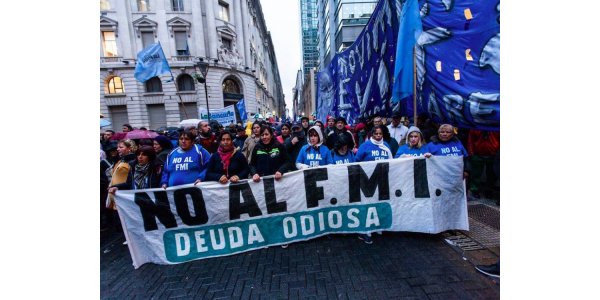Argentina and the IMF

The Fernandez-de Kirchner duo received a stunning blow at the midterm elections. While growing discontent was fueled by Covid-19, the country was already dealing with another crisis before the pandemic hit: debt.
Let’s look at Argentina’s economy and how it found itself coming to blows with the IMF in increasingly desperate rounds of negotiation as the deadline for 2021’s 3.5 billion USD repayments drew nearer.
The 2001 Crisis
The Argentine 2001-2002 financial crisis saw the biggest debt default in global economic history. In a 2001 Time article, from the midst of the crash, journalist Peter Katel described the lead-up to the crash as “three distinct crises [that] have converged in Argentina at the worst possible time.” These are the crises he described:
- The Peronist government under Menem had borrowed extensively from the IMF during the ‘90s, creating an enormous amount of debt. This saw a rise in national interest rates which made credit more expensive for businesses. Companies went bust, and employees were laid off.
- Menem had also overseen the privatization of utilities like electricity and communications. Public employees lost their jobs and the prices of basic services increased.
- During these years as the crisis was brewing, Economy Minister Domingo Cavallo pegged the Argentine Peso one-to-one to the dollar. In 1999, neighboring Brazil devalued its Real, and investors realized that they could buy cheaper alternatives to Argentine goods right next door. This loss of foreign investment put a stranglehold on the already indebted Argentine government.
The IMF refused to bail Argentina out, despite the calamity that could be caused by such a default.
Post-Crisis Growth
In the aftermath of the crisis, newly appointed finance minister and new president Nestor Kirchner steered the country out of the tumult with a series of policies that tackled the immediate effects of the crises and moved the economy into a period of rapid growth. They encouraged export substitution and invested government funds into social welfare while cutting back on spending in other sectors.
This period of rapid growth (an average GDP increase of 8.9% between 2003 and 2007) was so extreme that the government had to put in place measures to stabilize the value of their currency.
The Current Situation
In 2014, now under the Macri government, Argentina defaulted on its debt once again. The peso devalued, and major job loss occurred in the private sector. Macri had inherited a messy system from Christina De Kirchner - and although he ended currency control, lowered the tax on soybean exports (one of Argentina’s most lucrative products) and went into negotiation with the IMF to end the national default, his measures did little to slow the tide of rapid inflation.
Covid-19 hit an already fatigued economy, and the now Kirchnerist government not only once again refused the IMF loan that could help them on repayments but implemented one of the most restrictive lockdowns on the country, sinking the country deeper into poverty and making the tragamonedas Chile one of the few ways to win money.
All things considered it’s no wonder the Peronists under the Fernandez-de Kirchner government are falling out of favor, both with international investors and with the Argentine public.


 Monetization of foreign...
Monetization of foreign...